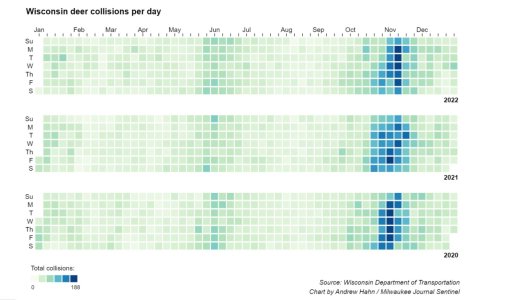Prairie Acres
5 year old buck +
Hunters often ask, "Has the rut has started?" I guess what they are really asking "Are the deer moving?" I wonder the same thing if I'm not seeing anything in the Wisconsin woods in late October. Reading the attached deer collision chart tells me that come late October the deer will be moving. Maybe not in my woods on that particular day.


